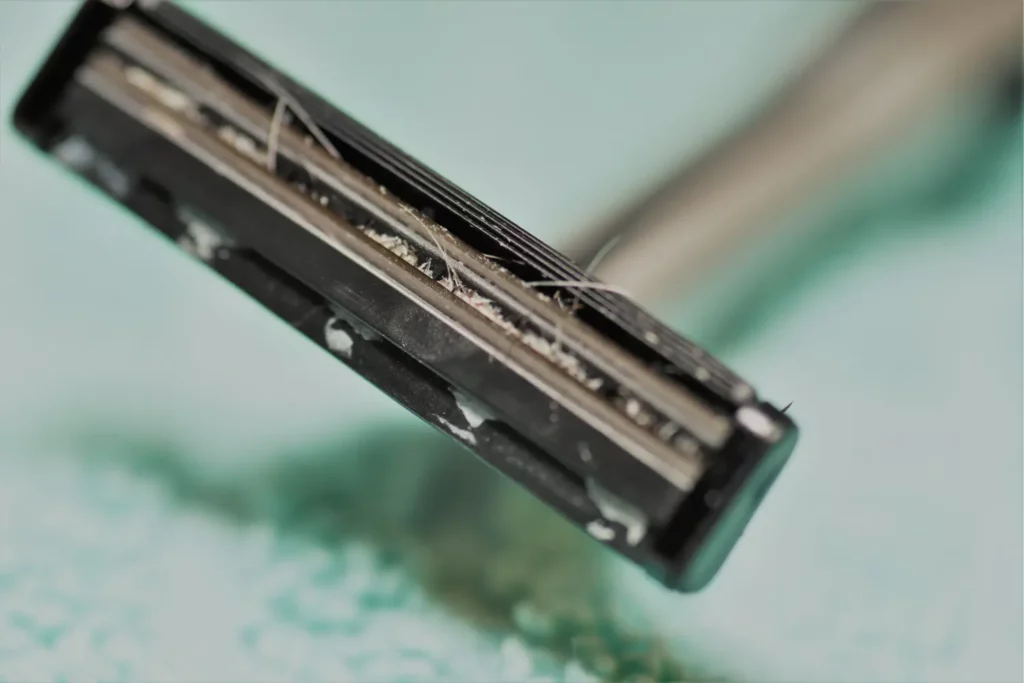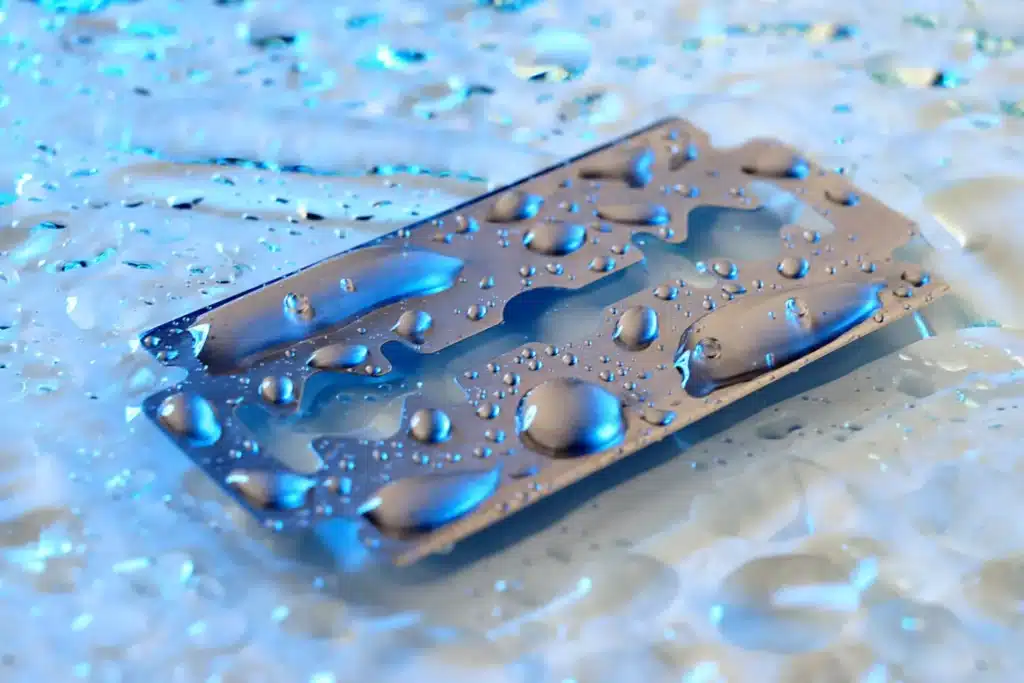A smooth, comfortable shave is something most people strive for, but how often should you change your razor blades to achieve the best results? In this article, we’ll examine the longevity of various types of razor blades and factors that can affect their lifespan. We’ll also share some tips for extending the life of your blades and avoiding common issues like razor burn, irritation, and ingrown hairs.
Razor Lifespan Summary: Comparing Different Types of Razors
To help you quickly compare the expected lifespans of various razors, we’ve compiled the information into the table below. Keep in mind that these lifespans may vary depending on factors such as blade quality, hair type, and shaving habits. This summary should serve as a general guide to help you better understand the longevity of different razor types.
| Razor Type | Expected Lifespan |
|---|---|
| Cartridge Razors | 5-10 shaves (depending on blade quality, hair type, and shaving habits) |
| Disposable Razors | 3-10 shaves (depending on razor quality and personal preferences) |
| Electric Shavers | 12-18 months (varies based on usage and specific model) |
| Double Edge Razors | 4-5 shaves (generally, may vary depending on individual factors) |
Lifespan of Different Types of Razor Blades

In this section, we will explore the typical lifespan of various razor blades, including cartridge razors, disposable razors, electric shavers, and double edge razor blades. Understanding the longevity of these different types of blades can help you make informed decisions about your shaving routine and mainenance.
Cartridge Razors: How Long Do They Last?
Cartridge razors are popular due to their convenience and ease of use. Generally, cartridge razor blades last between 5-10 shaves. However, this varies depending on the quality of the blades, your hair type, and your shaving habits. Cartridge razors are more prone to bacteria buildup, which can lead to skin irritation and infection. Regular cleaning and blade replacement can help prevent these issues.
Disposable Razors: When to Replace Them
Disposable razors are designed for short-term use and should be replaced after 3-10 shaves. The exact number of shaves will depend on the quality of the razor, the area being shaved, and your personal preferences regarding sharpness of the blade. Using a disposable razor beyond its intended lifespan can result in a dull blade that tugs on hair, causing irritation and razor burn.
Electric Shavers: Understanding Blade Longevity
Electric shavers offer a convenient alternative to traditional razors. Depending on the make and model, electric shaver heads, be it foil or rotary, typically need to be replaced every 12-18 months. However, this may vary based on usage and the specific model. Regularly cleaning your electric shaver can help prevent debris buildup and skin irritation, as well as extend the life of the blades. Models like those from Braun with self-clean systems can help keep your shaver clean and hygienic.
Double Edge Razor Blades: When to Swap Them Out
Double edge razor blades are an eco-friendly option that provides a close and comfortable shave. Generally, safety razor blades will last for about 4-5 shaves before requiring replacement.
When using a safety razor blade, ensure that you swap the blade out when it becomes dull to avoid nicks, cuts, and skin irritation. Regarding the different brands including Astra, Derby, Feather, Gillette, Merkur, Personna, and Wilkinson Sword, the lifespan of the blades may vary slightly.
Factors Impacting Razor Blade Lifespan

Several factors can influence the lifespan of your razor blades. In this section, we’ll discuss the role of razor blade quality, hair thickness and density, surface area shaved, and the importance of cleaning your razor. By considering these factors, you can optimize the performance and longevity of your razor blades.
The Influence of Razor Blade Quality
The quality of the razor blades plays a significant role in their longevity. High-quality blades made from durable materials, such as stainless steel, are more likely to retain their sharpness, providing a better shave and longer life. Carbon steel, while sharper than stainless steel, is more prone to rust and corrosion, which can reduce its lifespan.
Hair Thickness and Density’s Effect on Blade Wear
The thickness and density of your hair can greatly impact the lifespan of your razor blades. If you have extremely thick facial hair, can cause blades to dull more quickly, requiring more frequent replacements. Those folks with thinner hair may enjoy a few more shaves before needing to replace their blades.
Surface Area Shaved and Blade Lifespan
The larger the surface area you shave, the more quickly your blades will dull. For example, if you shave your face and your head or remove body hair, your blades will wear out faster than if you only shave your face. Additionally, shaving larger areas may require more pressure, leading to increased blade wear. So it is imortant to take this into context when deciding how often to change your razor blades.
The Importance of Cleaning Your Razor
Properly cleaning your razor can significantly extend its life. Rinsing your razor thoroughly after each use helps remove hair, shaving cream, dead skin cells, and other debris that can dull the blade. Additionally, allowing the razor to dry completely between uses can prevent rust and corrosion.
Tips for Extending the Life of Your Razor Blades
- Keep your blades dry: After each use, rinse your razor thoroughly and shake off any excess water. Store your razor in a well-ventilated, dry place to allow it to dry completely. Razor stands are a great way to keep your razor dry and safe from damage.
- Strop your blades: Stropping can help maintain the sharpness of your razor blades. This technique, often used for straight razors, involves running the blade along a leather or fabric surface to realign the blade’s edge.
- Invest in high-quality blades: Higher-quality blades may be more expensive initially, but their durability can save you money in the long run by requiring fewer replacements. In fact, Gillette blades can last up to one month, depending on your shaving habits.
- Use a pre-shave oil or cream: Applying a pre-shave oil or cream can help soften hair and reduce friction between the blade and your skin. This can lead to a smoother shave and decrease blade wear.
- Utilize proper shaving techniques: Employing proper wet shaving techniques, such as using hot water to open pores and soften stubble, shaving with the grain, and more can improve the effectiveness of your shave and reduce the strain on your razor blades.
- Use a separate razor for different areas: If you shave both your face and body, consider using separate razors for each area. This can help extend the life of your blades by reducing the overall surface area each razor is responsible for.
- Choose the right type of razor for your needs: Selecting the type of razor that best suits your hair type, personal preference, and primary factors like skin sensitivity can help optimize your shaving experience and extend the lifespan of your blades. It may take some trial and error to find the right razor for you, but the results are well worth the effort.
By following these tips and understanding the factors that impact razor blade lifespan, you can enjoy a consistently clean shave while extending the life of your blades and minimizing skin irritation, razor burn, and ingrown hairs. A well-maintained razor is the key to a superior shaving experience.